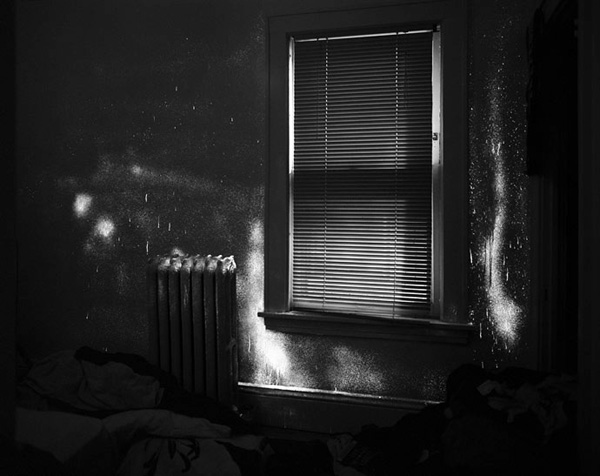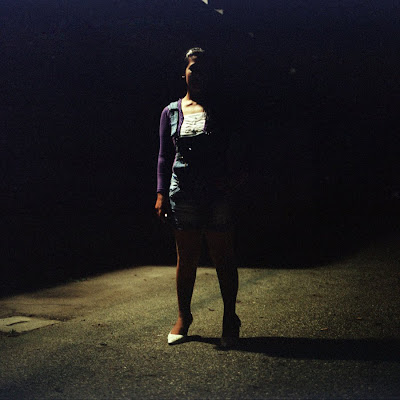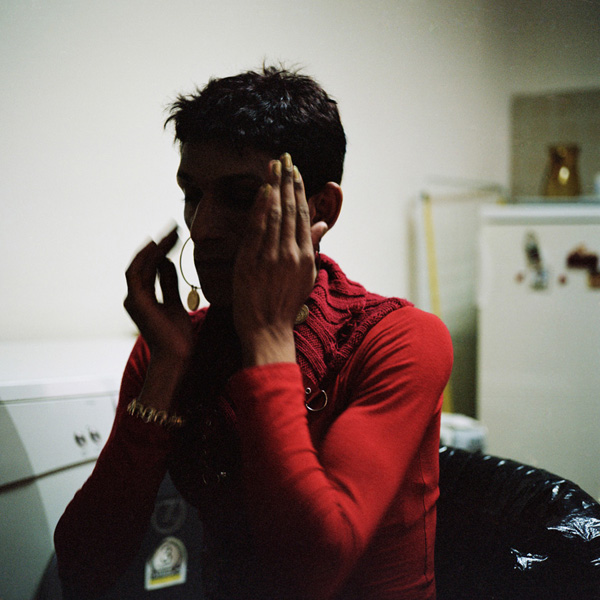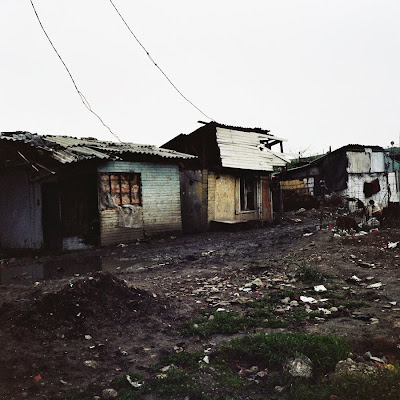
- 'tis the season
- 3rd Ward
- 8 x 10
- 8 x 10 mag
- 31 Women in Art Photography
- 2009 Project Grant Recipients
- 2010 Project Grant Recipients
- 2011 Project Grant Recipients
- 2012 Project Grant Recipients
- Advertising
- After Color
- Amani Olu
- Amy Arbus
- An-My Le
- Andreas Laszlo Konrath
- Andres Serrano
- Andrew Lichtenstein
- Angela Strassheim
- Anna-Sophie Berger
- Anna Bauer
- Anna Beeke
- Annabel Mehran
- Anne Menke
- Aperture Foundation
- Archival Pigment Printing (Inkjet)
- B+W Silver Gelatin Printing
- Barbara Crane
- Ben Fink Shapiro
- Ben Grieme
- Bill Armstrong
- Bill Jacobson
- Blair Getz Mezibov
- Bonni Benrubi Gallery
- Boogie
- Bravin Lee Programs
- Brea Souders
- Brian Nice
- Bruce Silverstein
- C-41 Film
- Canteen Magazine
- Cao Fei
- Cati Borruso
- Charmichael Gallery
- Chris Rhodes
- CLAMPART
- Colnaghi
- Compsiting
- Conde Nast Gallery
- Conde Nast Traveller
- Conventional C-Printing
- conventional c-prints
- Cosmopolitan Magazine
- Cristina De Middel
- Daniel Reich Gallery
- Danny Clinch
- Dave Krugman
- David Battel
- David Benjamin Sherry
- David Gahr
- David leventi
- David Sherry
- David Uzochukwu
- Debby Hymowitz
- Denny Renshaw
- Diana Zeyneb Alhindawi
- Digital-C Printing
- digital imaging
- Dominique Nabokov
- Editorial
- Edwynn Houk Gallery
- Elad Lassery
- Elinor Carucci
- Emiliano Granado
- Emmanuel Fremin Gallery
- Envoy Gallery
- Erica Allen
- Erika Larsen
- Eva O'Leary
- exhib
- Exhibition Mounting
- Exhibitions
- Fabiola Menchelli
- Fader Magazine
- Film Processing
- Fotografiska New York
- Framing
- Frederic Lagrange
- Frédéric Brenner
- Galerie Karsten Greve
- Galerie Number 8
- Gavin Brown's Enterprise
- Griffin Museum of Photography
- Heather Darcy Bhandari
- Hello Mr.
- Hey Hot Shot
- Higher Pictures
- Humble Arts Foundation
- Imaging
- James Clar
- James Fuentes LLC
- James Mollison
- Janaina Tschape
- Jane Lombard Gallery
- Janet Borden Gallery
- Jan Staller
- Jason Kraus
- Jen Beckman Gallery
- Jennifer Karady
- Jennifer Livingston
- Jennifer Loeber
- jessica Eaton
- Jonathan Mannion
- Joni Sternbach
- Josh Olins
- Joss McKinley
- JTT Gallery
- Juergen Teller
- Julia Comita
- Julie Saul
- Justine Kurland
- Justin James King
- Karen Irvine
- Katherine Newbegin
- Kaufman Repetto
- Ken Regan
- Kodak
- Laura Levine
- Lawrence Beck
- Leica Gallery
- Leslie Fritz
- Liz Clayman
- Lombard-Freid Projects
- Look Book
- Louisa Marie Summer
- Magazine Covers
- Manjari Sharma
- Mark Leckey
- Martin Schoeller
- Max Farago
- Max Snow
- Meredith Danluck
- Michael Buhler-Rose
- Micheal McLaughlin
- Milagros de la Torre
- Mitchell Innes and Nash
- Mitch Epstein
- MIxed Greens
- Moab Paper
- Modern Weekly
- MoMA
- Morrison Hotel Gallery
- Mounir Fatmi
- Mounting
- Muse Magazine
- Museum Boxes
- Museu Oscar Niemeyer
- MZ Wallace
- Natasha Gornik
- New York Magazine
- Nicholas Vreeland
- Nike
- OH WOW Gallery
- Olivia Bee
- Paulette Tavormina
- Paul Kasmin Gallery
- Pedro Arieta
- Penelope Umbrico
- Peter Funch
- Philip Andelman
- Phillip Lim
- Picto
- PROXYCO Gallery
- Purple Magazine
- Ramis Barquet
- Raymond Depardon
- Reed Krakoff
- Renwick Gallery
- Rep.Limited
- Retouching
- Richard Finkelstein
- Richard Mosse
- Richard Renaldi
- Rick Wester Fine Art
- Rika Magazine
- Robb Hann
- Robert Klein Gallery
- Robert Levin
- Robert Mann Gallery
- Robert Polidori
- Robin Rice Gallery
- Rodney Smith
- Rolling Stone
- Ruth Orkin
- Scanning
- Sebastiaan Bremer
- SF Camerawork
- Sharif Hamza
- Sies + Höke Galerie
- Simon Colley
- slideluck
- Some Days ...
- Sonnabend Gallery
- Sony Square NYC
- Stefan Ruiz
- Steven Kasher Gallery
- Sunny Suits
- Susan May Tell
- Sze Tsung Leong
- Talia Chetrit
- Tarter Sauce
- Tema Stauffer
- the art street journal
- The L Magazine
- The Morrison Hotel Gallery
- The New Yorker
- The New York Times
- The New York Times Lens Blog
- The nicest things ...
- Theo Wenner
- The Propeller Group
- Thomas Dozol
- Tiana Markova-Gold
- Tim Barber
- Time Magazine
- Tina Barney
- T Magazine / The New York Times
- Trisha Donnelly
- Trunk Magazine
- Valario Spada
- Vogue Nederland
- WIP / Lightside Individual Project Grant
- Women in Photography
- Yossi Milo Gallery
- Zoe Crosher
- Zoe Ghertner
2010 WIP – LTI / Lightside Individual Project Grant winners
Angela Strassheim: Evidence #1, 2009
We are pleased to announce the recipients of the 2010 WIP-LTI/Lightside Individual Project Grant and Kodak Materials Grant. The $3000.00 prize goes to Angela Strassheim for her series Evidence
Angela’s project was borne of her insider’s knowledge of professional forensic photography: she holds a Forensic & Biomedical Photography Certification from the Metro-Dade County, Forensic Imaging Bureau in Miami, Florida. It was through her experience in the field using the protein revealing chemical agent “Blue Star” (which has been flagrantly aggrandized on numerous detective TV dramas) that she began to imagine Evidence as a fine art series.
Our $1000.00 Kodak Materials grant goes to Tiana Markova-Gold for her project Supporting the Human Rights of Sex Workers in Macedonia.
Tiana Markova-Gold: Kristina, from Supporting the Human Rights of Sex Workers in Macedonia, 2010
Tiana Markova-Gold is a freelance documentary photographer based in Brooklyn. Since the spring of 2007 she has been working on an in-depth project about the lives of women in prostitution in New York City. In 2009 she traveled extensively through Asia, Nigeria and Brasil documenting social services projects with a particular focus on women and girls.
Click on the images above to see more of each project. Use the links below to connect with the artists and sponsors individual websites.
Links for additional information on the artists and sponsors:
Humble Arts Foundation, Women in Photography
LTI / Lightside would like to acknowledge the considerable efforts of Amy Elkins and Cara Phillips of Women In Photography, Amani Olu and Jon Feinstein of Humble Arts Foundation and last but not least our astute guest judge, Karen Irvine of the Museum of Contemporary Photography, Columbia College, Chicago.
Tags: 2010 Project Grant Recipients, Humble Arts Foundation, Karen Irvine, Kodak, Women in Photography
Angela Strassheim: 2010 WIP-LTI/Lightside Individual Project Grant recipient

Angela Strassheim: Evidence #1, 2009
Our 2010 $3000.00 WIP-LTI/Lightside Individual Project Grant has been awarded to Angela Strassheim for her project Evidence.
Angela’s project was borne of her insider’s knowledge of professional forensic photography: she holds a Forensic & Biomedical Photography Certification from the Metro-Dade County, Forensic Imaging Bureau in Miami, Florida. It was through her experience in the field using the protein revealing chemical agent “Blue Star” (which has been flagrantly aggrandized on numerous detective TV dramas) that she began to imagine Evidence as a fine art series.
Evidence
Perhaps we have all processed a question in certain love relationships: Could we be a victim of violence or perform an act of violence against a loved one out of our immense capacity to feel jealousy, anger, rage, and desperation in a moment of extreme emotion? These photographs allow for the viewer to entertain the idea that this situation could involve anyone of us. My past work in forensic photography, both photographing crime-scenes and documentation for DNA collection, led me to this project.
Evidence is a group of photographs taken at homes where familial homicides have occurred. Long after the struggles have ended in these spaces, despite the cleaning, repainting and subsequent re-habitation of these homes, the “Blue Star” solution activates the physical memory of blood through its contact with the remaining DNA proteins on the walls. The black and white images are long exposures – from ten minutes to one hour – with minimal ambient night light pouring in from the crevices of windows and doors, capturing the physical presence of blood as a lurid glow.
The color images were taken upon arrival at each home in which there were approximately 140 different visited locations across the U.S. These photographs are evidence that I was physically present at the homes that I researched. They represent the mystery inside a box that is unattainable in a physical sense. Each image title is a list of the murder weapons used, with-holding names and the gory details of the events.
The crime scene is presented on two levels; it is both an accurate, tragic, and dramatic transcription of the event and a mysterious backdrop onto which one can project their imagination.

Evidence, #2, 48×60

Evidence, #3, 48×60

Evidence, (12-inch stiletto knife), 11×14

Evidence, #4, 28×35

Evidence, #5, 48×60

Evidence, #6, 60×72

Evidence, (assorted kitchen knives 02), 11×14

Evidence, #7, 28×35

Evidence, #8, 48×60

Evidence, (two Mossberg twelve-gauge shotguns), 11×14

Evidence, #11, 48×60

Evidence, #12, 48×60

Evidence, #13, 28×35

Evidence, (pitchfork 01), 11×14
About Angela Strassheim
American, b. 1969, Bloomfield, Iowa; lives and works in New York. 2003 MFA, Photography, Yale University, New Haven, CT . 1997 Forensic & Biomedical Photography Certification, Metro-Dade County, Forensic Imaging Bureau, Miami, Fl. 1995 BFA, Media Arts, Minneapolis College of Art and Design, Minneapolis, MN. Featured in the 2006 Whitney Biennial and Musee d’ Elysee 50-reGeneration exhibition. Nationally and internationally exhibited in solo and group exhibitions. Collected by museums and various private collectors. Awards include a Bush Fellowship, McKnight Fellowship, Jerome Fellowship, and an Artist Initiative Grant, was a finalist in 2008 for the Les Recontres D’ Arles International Photography Award.
Angela first pursued a career in Forensic Photography. Instead, she now directs the camera toward the subject of family and the domestic environment. Her images “vacillate between what is immediately revealed on the surface and the unsettling nature of what is discovered upon further inspection.” In her first series, Left Behind, she took an introspective look at her own upbringing in a born-again Christian home. In her second series, Pause, she explores what it means to be a daughter and examines the complex dramas that reveal themselves in relationships with the father and other male figures of significance. In her most recent body of work, Evidence, is ongoing and has expanded to a new body of work about domestic violence. Currently she is researching a long-term project in Israel that relates to women of the Bible.
Tiana Markova-Gold: 2010 WIP-LTI/Lightside Kodak Materials Grant recipient
Tiana Markova-Gold: Kristina, from Supporting the Human Rights of Sex Workers in Macedonia, 2010
Our 2011 WIP-LTI/Lightside $1000.00 Kodak Materials grant has been awarded to Tiana Markova-Gold for her project Supporting the Human Rights of Sex Workers in Macedonia.
Isolation, Vulnerability and Courage: Sex Workers in Macedonia
In Macedonia, as throughout the world, sex workers are pushed to the margins of society by a combination of prejudice, discrimination, and violence. Sex workers inhabit a particularly vulnerable position in Macedonian society, facing harassment and violence not only from their clients and pimps, but also from law enforcement officials and other authorities. These abuses include physical violence, illegal detention, compulsory testing for sexually transmitted diseases, and rape, which are compounded by substandard enforcement of law and lack of access to health and support services. Adding to these challenges are the risks of HIV/AIDS and other STDs, drug addiction, a hostile public attitude, and mass-media harassment. Because of the tremendous negative stigma connected to prostitution in Macedonia, most sex workers are living double lives, concealing the fact that they are sex workers from their families and the communities in which they live. A disproportionate number of street-based sex workers, those most vulnerable, are members of the Roma community, Macedonia’s most harshly discriminated against ethnic minority group. Gay and transgender sex workers are often targeted and further marginalized because of their sexual or gender orientation.
Building upon my previous long-term projects documenting the lives of sex workers in New York City, I spent several weeks in the spring of 2010 photographing and recording the stories of sex workers in Macedonia. I collaborated closely with Healthy Options Project Skopje (HOPS) to create the body of work, spending many days at their drop-in center, joining the outreach team in the streets and in the Roma community, and visiting sex workers in their homes. I recorded hours of audio interviews and conversations with the people I photographed, as well as the sounds of the streets and rooms where they live and work. Because of the sensitivity of the topic and the previous negative exposure sex workers have suffered in Macedonian media, it was essential to me to not only work closely with HOPS, but also to discuss the project directly with the sex workers themselves. Almost all of the people I photographed in Macedonia were eager to tell their stories but asked that I conceal their identities from the viewer; they wanted to be seen and heard but were terrified of being exposed. Theirs are stories of fear, isolation and vulnerability, but also of survival and courage in the face of relentless abuse and alienation.
Suto Orizari, from Supporting the Human Rights of Sex Workers in Macedonia, 2010

Skopje, Macedonia, from Supporting the Human Rights of Sex Workers in Macedonia, 2010
Skopje, Macedonia, from Supporting the Human Rights of Sex Workers in Macedonia, 2010

Dunja, Skopje, Macedonia, from Supporting the Human Rights of Sex Workers in Macedonia, 2010
Tiana Markova-Gold is a freelance documentary photographer based in Brooklyn, New York. She received a New York Times Scholarship to attend the full-time Photojournalism Program at the International Center of Photography in 2006-07. She has traveled extensively, documenting social issues with a particular focus on women and girls. Tiana’s photographs have been recognized in numerous photography contests including Pictures of the Year International, New York Photo Awards, PDN Photo Annual, American Photography and the International Photography Awards. Her work has been included in exhibitions at Sasha Wolf gallery, New York Photo Festival, HOST gallery in London, England and the Lumix Festival of Young Photojournalism in Hannover, Germany.
Since the spring of 2007, Tiana has been working on an in-depth project about the lives of women in prostitution in New York City. In January 2009 she traveled throughout Asia on a photography fellowship from the Johnson & Johnson Foundation, photographing social services projects in nine countries across the region. In April and May 2009 she traveled to Nigeria and Brasil as the recipient of a fellowship from Global Fund for Children and the Nike Foundation, documenting the work of several local organizations whose aim is to empower, protect and educate adolescent girls and young women. She is a 2010 New York Foundation for the Arts Fellow in Photography and 2010 recipient, with writer Sarah Dohrmann, of the Dorothea Lange-Paul Taylor Prize from the Center for Documentary Studies at Duke University for If You Smoke Cigarettes in Public You Are a Prostitute: Women and Prostitution in Morocco. www.tianamarkova.com.




